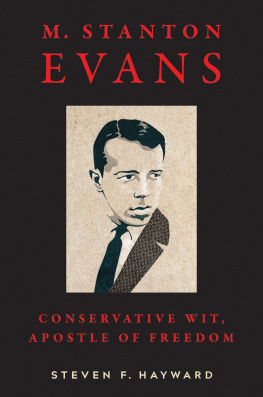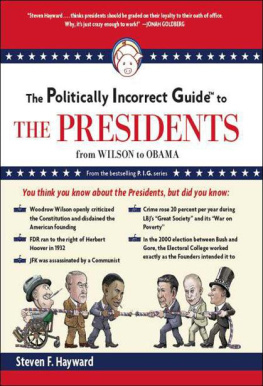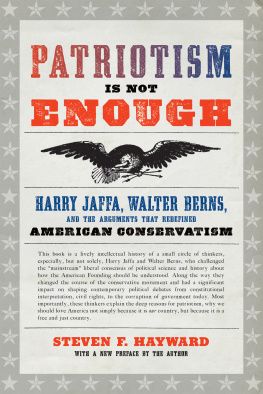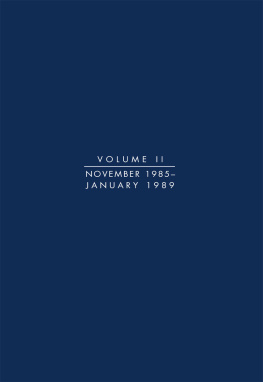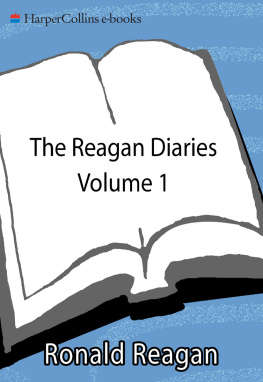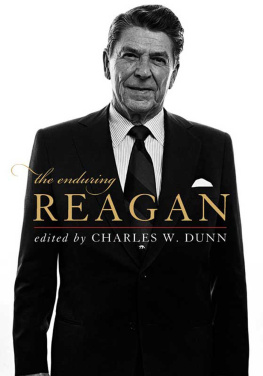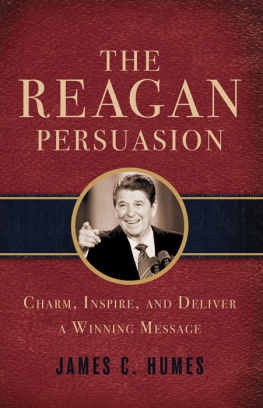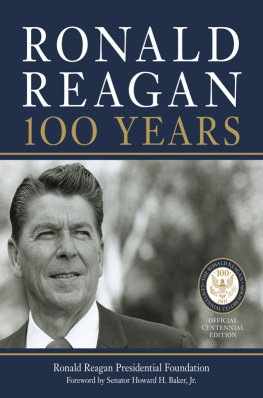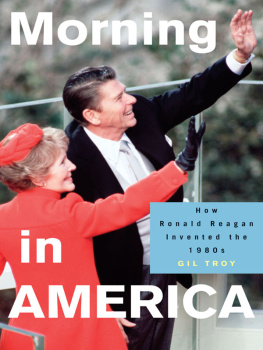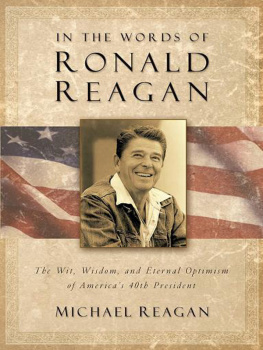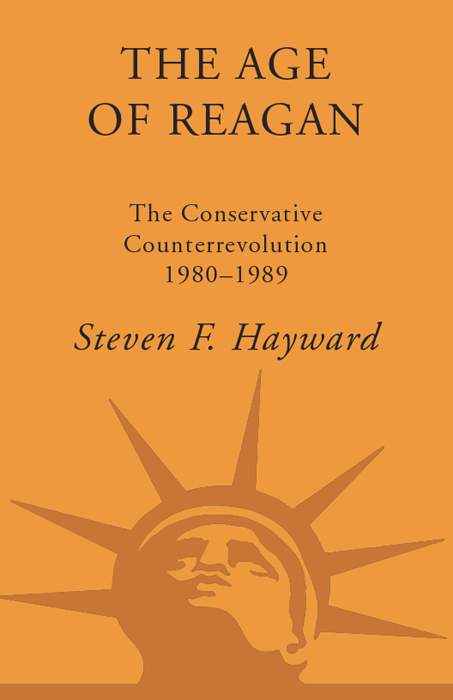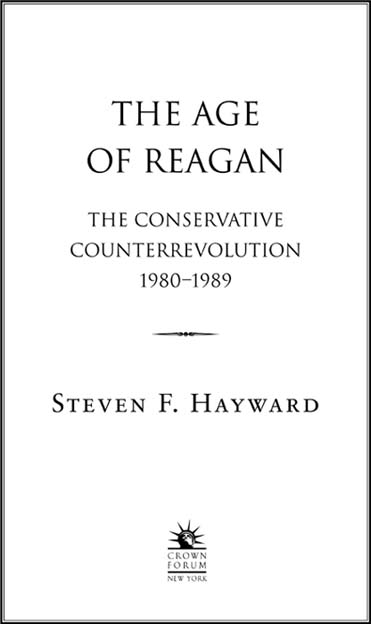Also by STEVEN F. HAYWARD
To Phil Ryan, who taught me the endurance for such a project; and James Holton and Harry V. Jaffa, my first teachers in politics
AUTHORS NOTE
I BEGAN THIS two-volume project more than ten years ago in the belief that Edmund Morriss then-forthcoming official biography would be too narrow in scope, and more broadly that Reagan would fare poorly at the hands of what John Patrick Diggins calls the media-academic complex. The full catalogue of dismissive judgments of Reagan during his political career could fill a large encyclopedia. Michael Kinsley, an astute observer of politics, is typical of established liberal opinion with this judgment of Reagan from 1986: It seemed to us, the carping critics, that this man was not terribly bright, not terribly thoughtful or well informed, not terribly honest, and in most other ways not up to the most important job in the world. Or this, from the Nation: Those without a sense of irony about American politics may find it hard to believe that a man of such limited vision, mediocre intellect, and narrow comprehension can cut a figure of world-historical importance.
Although Reagan left office in 1989 with his popularity with the American people intact, it was the near-universal opinion of the commentariat that the eventual verdict of history on his governance would be negative, perhaps harshly so. Calvin Coolidge left office with high popularity too but, after two generations of rough handling by academic historians, became a president of low regard. Reagan was surely going to be Coolidgized. An American Heritage magazine survey of journalists and historians taken around the time Reagan left office ranked him as the second most overrated president, behind, surprisingly, John F. Kennedy.
But over the past decade, starting well before Reagans passing in 2004, the most unexpected thing occurred: liberals started to like him. Not all of him, to be sure, and therein lies a tale and the necessity for a broad-gauge book such as this. There are two main reasons for the upward revision in Reagans stock. The first was the dramatic and unexpected end of the Cold War and the demise of the Soviet Union. Causation is complicated and disputed, but even Reagans critics allow him a substantial role in the outcome. The second reason for the positive reappraisal was the revelation, starting about ten years ago, of Reagans extensive writingsradio addresses, letters, speeches, and finally his personal diarywhich displayed a lively and informed mind and a greater depth of character than hitherto imagined. At long last we had found the rest of him, to answer his most famous movie line.
The Cold War is the most dramatic aspect of Reagans story, but this left a gap in the Reagan literature, and a frequent interpretive disjunction, as too many observers, especially the liberals, draw a distinction between Reagans foreign policy and his domestic policy. Too often his domestic policy is either ignored or treated roughly. As this narrative argues, they need to be seen as a unity. Too many of the treatments of Reagan try to abstract from his ideology, which is like, to borrow G. K. Chestertons phrase, trying to tell the story of a saint without God.
What follows is an integrated, analytical narrative, covering the whole of the Reagan presidency. Even at this length, I have had to be selective and often too concise, leaving out not only valuable detail but also entire episodes. (The long agony of the savings and loan disaster is omitted, for example, in part because it was a diffuse and bipartisan fiasco.) Above all, this is intended to be a study in statesmanshipreflecting in narrative form on some permanent questions that we are still working out in our current political scene. Although I haveand have always hadstrong pro-Reagan sympathies, this narrative does not shrink from noting his weaknesses or from strongly criticizing his mistakes and errors, both large and small. Unlike the criticisms of media know-it-alls or ideological opponents, however, the criticisms here are intended to illuminate the deeper, permanent problems of politics and policy. The first volume of The Age of Reagan attempted to explain the deeper sources of the inevitability of Reagans election in 1980. The present chronicle of the ups and downs of his presidency attempts to explain Reagans durability and his legacy for politics today.
A word about the pace of the book: it is slightly lopsided. The early chapters linger in great detail on the first year of the Reagan presidency, which was its most important year not only because it was the most eventful but also because it laid down the baseline for more than two decades of subsequent political argument between left and right. That year was a genuine turning point, and as such, it deserves treatment in depth. It is also necessary to tell this part of the Reagan story in its fullness, as it is a case study in the difficulty of plotting a genuine change in the course of the nations affairs.
Steven F. Hayward
Cambria, California
PROLOGUE
T HE L ION AT THE G ATE
Mr. Gorbachev, tear down this wall!
P RESIDENT R EAGAN AT THE B RANDENBURG G ATE , W EST B ERLIN , J UNE 12, 1987
M OST OF HIS senior aides didnt want him to say it. Indeed, they tried repeatedly to talk him out of it. Youll embarrass your host, West German chancellor Helmut Kohl. Youll anger and provoke Mikhail Gorbachev, with whom youve just started making progress on arms control. Youll whip up false hope among East Germansfor surely the Berlin Wall isnt coming down anytime soon. Besides, Germans have grown used to the wall. The ultimate reason: Youll look naive and foolish, Mr. President.
Virtually the entire foreign policy apparatus of the U.S. government, Reagan speechwriter Peter Robinson recalled, tried to stop Ronald Reagan from saying Tear down this wall, including Reagans secretary of state, George Shultz, and the new national security adviser, General Colin Powell. The State Department and the National Security Council (NSC) persisted up to the last minute trying to derail it; one meeting between Powell and White House communications director Tom Griscom was, participants say, tense and forceful.


